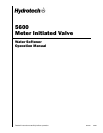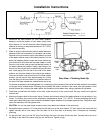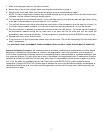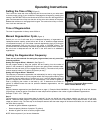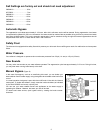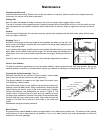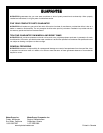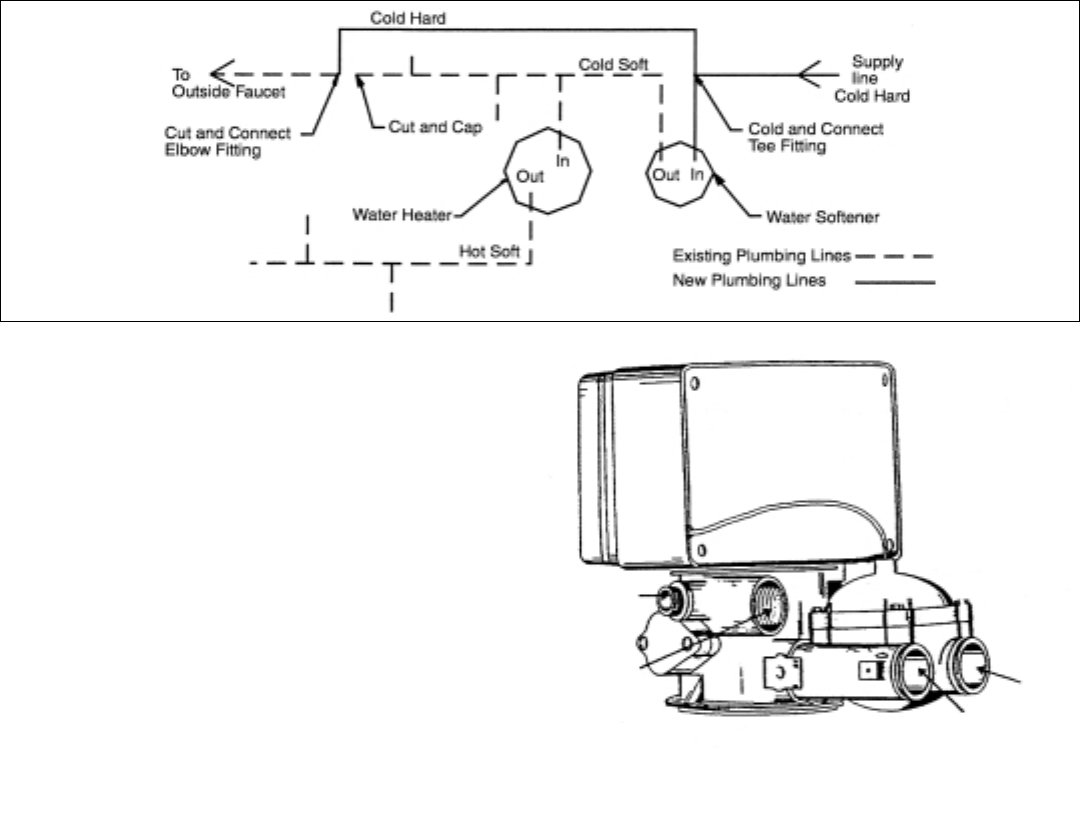
2
1. Determine the best location for your water softener,
bearing in mind the location of your water supply lines,
drain line and 110 volt AC electrical outlet. Subjecting the
softener to freezing or temperatures above 110°F (43°C)
will void the warranty.
2. Water to supply outside faucets used to water lawns and
gardens should not be softened. A new water line is often
required to be connected to supply hard water to the inlet
of the water softener and to the outside faucets. Cut the
water line between where it enters the house; before any
lines that branch off to feed the hot water heater or other
fixtures in the house; and as near the desired location of
the water softener as possible. Install a tee fitting on the
feed end of the cut pipe and an elbow fitting on the other
end. Install piping from the tee to the inlet of the water
softener and from the elbow to the outlet to the softener.
To server the water lines which branch off to feed outside
faucets, cut the branch lines approximately two inches
from the fitting on the main water line. Install an elbow on
the end of the pipe nearest the outside faucet and a cap
on the end connected to the existing water line. Install piping from the tee on the inlet to the water softener to the elbow
on the pipe to the outside faucet. Following this procedure will result in all lines in the house, with the exception of the
outside faucets but including the water heater and therefore the hot water lines, being supplied with soft water.
3. Familiarize yourself with the location of the inlet, outlet and drain on the control valve. Be very careful not to get the
controls wet.
4. Attach the bypass valve to the control valve. Connect the inlet and outlet of the water softener to the plumbing in the
house. The control valve must not be subjected to temperatures above 71°C (160°F). To avoid damaging the control
valve when sweat fittings are used, solder the threaded copper adapters to the copper pipe and then, using teflon tape,
screw the assembly into the bypass valve.
CAUTION - do not use pipe thread compound as it may attack the material in the valve body.
5. Using teflon tape, screw the 1/2” hose barb into the drain port in the valve. Attach 1/2” drain hose to the hose barb and
tighten securely with a hose clamp. Run the drain line to a floor drain or a laundry drain. Complete any necessary
plumbing.
6. On the twin tank units, pull the 3/8” brine line through the hole in the side of the brine tank. Connect the brine line to
the fitting on the side of the valve using the nut and ferrule. Tighten snugly.
Installation Instructions
OUTLET
INLET
DRAIN
LINE
BRINE
LINE
Rear View - Plumbing Hook-Up



